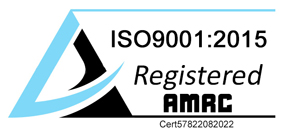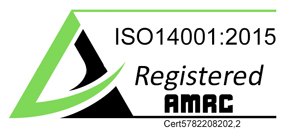Anodised Aluminium
Why modern architects choose aluminium
Modern architects require building materials that not only allow them to design and subsequently build structures that are visually striking, but to do so in an environmentally friendly, sustainable manner. This results in buildings that will stand the test of time, both visually and in their durability. As the technology and techniques develop in the construction industry, the longevity and reliability of sustainably sourced materials must meet increasingly demanding expectations. Materials must be as malleable as they are reliable, maximising scope for design and overall durability.
Anodised Aluminium
In its most basic and natural state, Aluminium is far more resistant to corrosion than other frequently used building materials such as Iron and Steel. Aluminium has a naturally occurring oxide layer which provides a rudimentary protection against the elements. However, this layer is irregular and unstructured as natural occurrences often are, meaning the base metal is protected up to a point. Once corrosion breaks through and the oxidation process sets in, the overall appearance of the metal is spoilt permanently.
This is where the anodisation process steps in, ironing out those irregularities to create a barrier which is wholly reliable. The thin and unreliable layer that occurs naturally is augmented in a scientifically controlled environment, creating a thicker, consistently formed oxide layer. Anodisation provides unrivalled corrosion resistance found in no other metal building material as it is not a layer adhered to a surface, it is within the metal substrate.
External building applications have been using anodised aluminium for over six decades and as long as the anodic layer is of the correct thickness for its application, the metal will out-perform any other common building material even in the most severe weather conditions. The most common applications include buildings in cities and marine environments, mainly because of anodised aluminium resilience to sulphates and chlorides.
No chance of filliform corrosion
Filliform corrosion, although it sounds like it is taken from science fiction, is a very real type of corrosion that occurs between the metal and its surface finish. When a metal (including aluminium) has its surface finish scored or scratched, if there are surface defects or general damage to the finish, filliform sets in. This works away beneath the surface finish until the corrosion begins to show through, by which time of course it is too late.
The oxide layer or anodic layer, once the aluminium has undergone the anodisation process, is permanently connected to the surface of the untreated aluminium. Its is part of the metals substrate, completely removing the issue of a layer between layers of surface finish and the base metal. As a consequence of the process, the material is impervious to filliform corrosion. Should the surface be scored or damaged, the surface will simply heal itself through the normal oxidisation process.
The real McCoy
Part of the charm of building with anodised aluminium is in its authentic metallic appearance and feel. The lustre of the materials overall finish simply cannot be recreated through other methods of finishing. Because the anodic layer is a part of the metal itself, it simply enhances the metals naturally occurring qualities. Whether he original material is aluminium, steel, wood or plastic – a painted finish always has the same flat appearance, even where multiple layers of metallic pigments are used. There is no compromise for the real thing, in either appearance or durability.
Experienced Designers & Manufacturers
We create aluminium profiles and extrusions, designed and manufactured especially to suit your requirements. Contact our team today to arrange a quote and see how our service can help your business.
Flexible Volumes of Product
For one of pieces or larger bulk order, simply get in touch with our team today to get the ball rolling and start our bespoke design process.


